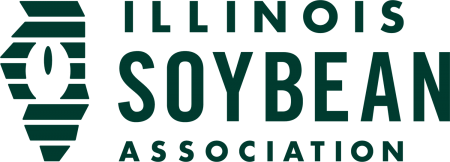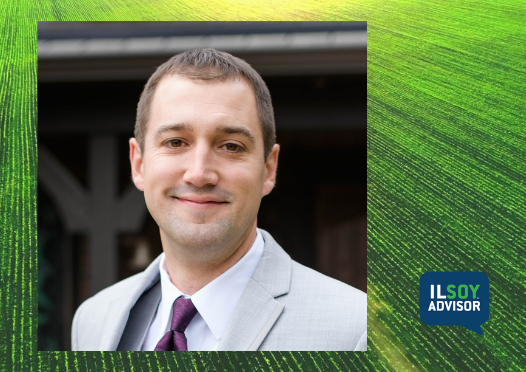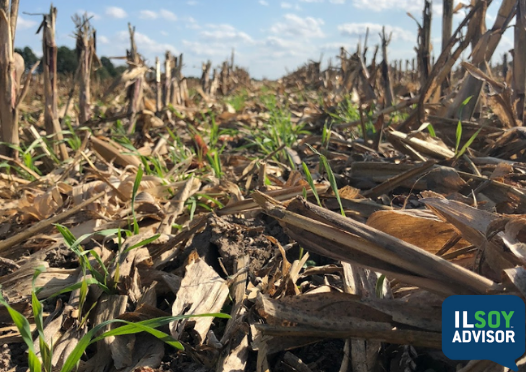ILSOYADVISOR POST
SHOWCASE FARMER: David Droste
The farmer. David Droste raises corn, soybeans and wheat near Nashville, Ill.
Environmental challenge. Droste’s farm is located in the Kaskaskia watershed in southwestern Illinois. Area soils and topography contribute to concerns about erosion and phosphorous loss. Most of the land he farms is comprised of silt loams with low organic matter with clay-based subsoils. According to Droste, the challenge in farming these soils is that water does not percolate through them very well, so most water runs off with surface drainage.
“In our area, phosphorous loss and erosion are the main issues. We don’t have tile drainage in our area, so nitrogen loss is not as significant of a concern as phosphorous loss.”
Best management practices.
“In our operation, we’re looking at what we can do to reduce both nitrogen and phosphorous loss. We’re talking a closer look at when and how we apply these nutrients and in what form.
“We think it’s important to look at the crop that we’re fertilizing and know when that crop needs nutrients,” he says. “We try to apply nutrients in a timely fashion so that they’re not exposed to the environment any longer than necessary. So, instead of applying the full rate before planting, we like to split-apply nitrogen, so we are putting it out there as the crop needs it.”
He adds that while phosphorous application used to be a common fall practice, he is now applying phosphorus at planting. “Spring application helps to keep the nutrients available when the crop needs it. Fall application just increases the risk of losing nutrients to erosion.”
Because erosion control is a primary concern for Droste, he uses both no-till and minimum till on his farm. “We’re trying to eliminate tillage as much as we can by no-tilling our soybeans and wheat.”
Double-crop as a cover crop.
Double-crop soybeans are part of Droste’s cropping strategy and they serve double duty on his farm. For the 2015-2016 cropping year, Droste has planted about 400 acres of wheat that will be followed by soybeans in the summer of 2016.
“Since we’re in a wheat-growing area, wheat serves as a cover crop that also carries a cash return with it.”
With unseasonably warm weather late into the fall of 2015, Droste reports that his wheat is the best he’s seen for this growth stage. “Usually by the first week in December wheat is going into dormancy, but this year it’s still growing. From the perspective of working as a cover crop, that’s a good thing.”
Industry involvement. David’s work with conservation began when he served on the local soil and water conservation board in the 1980s. His current work on sustainability includes serving as the ISA representative on the Illinois Council on Best Management Practices (C-BMP) board of directors, as well as work with the Indian Creek watershed project and Field to Market. He says his current work is important to him, as it is a continuation of the work he did many years ago to help growers adopt new conservation practices.
Advice to growers.
Droste says that it’s important for farmers to always be working to update their production practices. “As technology changes, we can do things better than we used to be able to do, making it easier for us to be more sustainable.”
“Growers need to be aware of what’s going on. They need to start trying things to see what’s going to work for their operations and not hurt the outcomes for the crop or their profitability. Once they identify those practices on a small scale, they can expand them to their full farming operation.”
Droste adds that profitability and conservation go hand-in-hand. “If you’re conservation-minded, you’ll be more profitable. For example, you’ll find you may not need to purchase as many nutrients as you had in the past by taking a different look at your application timing and approach. You might be able to save some money in nutrient purchases and realize better yields than before.”
Finally, he adds that growers should be aware of the sustainability efforts being undertaken by food companies and retailers. “I feel that by making myself aware of what those sustainability programs are, I can keep meeting their needs and keep them as good customers for the crops I grow.”
One thing for ’16. Droste says he would like to be able to do more with practices like terracing and incorporate more waterways and buffer strips into his operation to help reduce soil erosion.





Comments
Add new comment